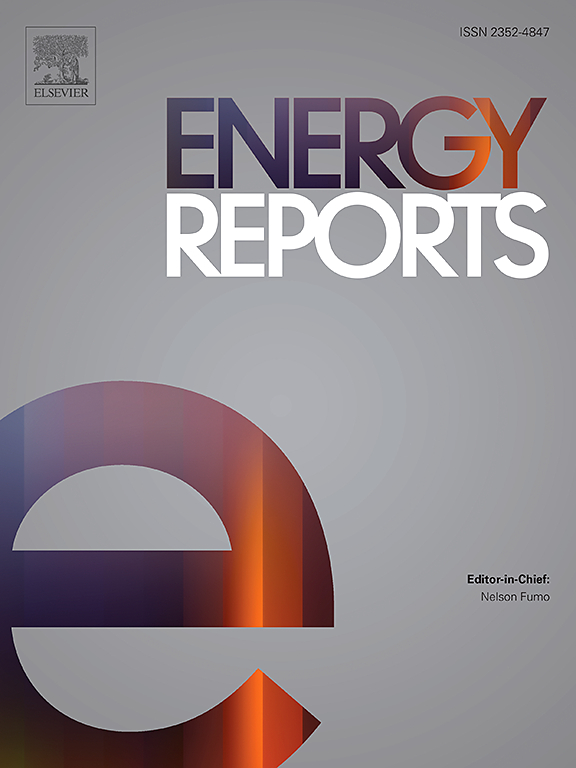预测未来气候:整合可再生能源和机器学习来解决温度和温室气体排放问题
IF 5.1
3区 工程技术
Q2 ENERGY & FUELS
引用次数: 0
摘要
多年来,人口增长导致电力需求急剧上升,这反过来又增加了化石燃料的使用,化石燃料是温室气体排放的主要来源。可再生能源提供了一种更清洁的选择,有助于减少这些排放,减轻气候变化的影响。虽然最近的研究主要集中在温室气体排放与温度升高之间的直接关系上,但本研究采用了一种新的方法,将分析分为两个阶段。第一阶段研究温室气体浓度与大气中太阳辐射抑制之间的关系。随后,第二阶段将捕获的太阳辐射与平均温度模式联系起来。建立了两个预测精度为95% %的数学模型来估计现有可再生能源项目捕获的太阳辐射的减少并预测由此产生的温度变化。为了提高预测精度,利用决策树、支持向量机和核朴素贝叶斯等多种机器学习模型,基于温室气体和被捕获的太阳辐射这两个特征对平均温度进行预测。采用神经网络聚类方法捕获CO2与太阳辐射之间的非线性相互作用。这种方法克服了传统方法的局限性,同时又符合气候物理原理。该论文还以约旦为例研究了气候变化现象对蒸发速率的影响,提供了对其区域环境影响的见解。本文章由计算机程序翻译,如有差异,请以英文原文为准。
Predicting the future climate: Integrating renewable energy and machine learning to address temperature and GHG emissions
Over the years, population growth has led to a sharp rise in electricity demand, which in turn has increased the use of fossil fuels, the main source of Greenhouse gas emissions. Renewable energy offers a cleaner alternative, helping reduce these emissions and lessen the impact of climate change. While recent studies primarily focus on the direct correlation between Greenhouse gas emissions and temperature elevation, this study takes a new approach by breaking the analysis into two stages. The first stage investigates the relationship between Greenhouse gas concentrations and the suppression of solar radiation trapped in the atmosphere. Subsequently, the second stage links trapped solar radiation with average temperature patterns. Two mathematical models with 95 % prediction accuracy are developed to estimate the reduction in trapped solar radiation from existing RE projects and predict resulting temperature changes. To improve the prediction accuracy, multiple Machine learning models, namely Decision Tree, Support Vector Machine, and kernel Naive Bayes, were utilized to predict the average temperature based on the two features, Greenhouse gas and the trapped solar radiation. Neural Network Clustering was also employed to capture nonlinear interactions between and solar radiation. This approach overcomes the limitations of traditional methods while aligning with climate physics principles. The paper also addresses the impact of the climate change phenomenon on the evaporation rate in Jordan as a case study, offering insights into its regional environmental effects.
求助全文
通过发布文献求助,成功后即可免费获取论文全文。
去求助
来源期刊

Energy Reports
Energy-General Energy
CiteScore
8.20
自引率
13.50%
发文量
2608
审稿时长
38 days
期刊介绍:
Energy Reports is a new online multidisciplinary open access journal which focuses on publishing new research in the area of Energy with a rapid review and publication time. Energy Reports will be open to direct submissions and also to submissions from other Elsevier Energy journals, whose Editors have determined that Energy Reports would be a better fit.
 求助内容:
求助内容: 应助结果提醒方式:
应助结果提醒方式:


